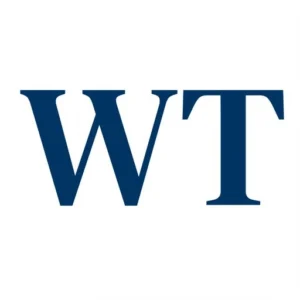
Saudi Arabia’s targeted attempts to foster female involvement in both public and private industries have seen notable success, as corroborated by a state-issued report. This document accentuates a discernible 20 percent rise in women workers, amassing to 1.5 million in the fourth quarter of 2022, when put side by side with the 1.2 million reported in the same timeframe of the YUR.
GASTAT figures point to an impressive ascent in the population of working women; between-2021 to 2022 expansion that saw 861,197 female employees in the private sector and 609,364 in the public sector. An impressive surge in the number of women actively engaging in the labour arena transpired with their presence in the workforce rocketing considerably, from 27.6 percent to 30.4 percent from the fourth quarter of 2021 to the same span in 2022.
This growth is an evidence to the growing economic roles of women that are being taken on in Saudi Arabia.
Illustrating the spurt, the rate of female employment hit 36%, surpassing the 35.6% attained in Q4 2021. This augurs well for the country, and is in keeping with the Vision 2030 goal of a 30% female workforce participation rate.
A comprehensive study into the data showed that the aggregate of female workers obligated to the social security framework tallied 970,330 in the last three months of 2022.
From October to December of the previous year, the combined economic activities of wholesale, retail, and motor vehicle repair had the highest concentration of female workers, with 192,952 in total. Second-highest was the construction sector, with 139,654 workers, and third was healthcare with 111,052 women employed.
The Saudi Human Rights Commission delivered an admirable summary in February, headed by its director, Hala Al-Tuwaijri. She announced that the proportion of women employed across the nation had grown remarkably from 21% to 35% within a five year period.
The kingdom has suffered with decreasing unemployment, leading the rate to plunge from 11.6 percent to 5.8 percent in the previous five years.
Al-Tuwaijri expressed the tremendous effects of these labours during the 52nd session of the UN’s Human Rights Council in February.
In particular, the female participation rate in the job-market progressed from 21.2 percent to 34.7 percent, whereas their financial engagement elevated from 17 percent to 37 percent from 2017 to 2022.
At the 2020 G20 Riyadh summit, King Salman spoke about the essential role of women in instigating societal progress and enforcing reform. He highlighted women’s impact and the need to bolster their part in decisions that shape our world. This sentiment echoes the commitment to encourage female partaking which is fundamental for inspiring growth and improvement.
In an extraordinary study, Saudi Arabia was revealed to be at the forefront of gender parity in the tech start up realm. Unexpectedly, Saudi women outstripped men in this field, which differed from all other situations. Also, they contributed to the tech sector to a greater degree than women in Europe, with a proportion of 28% by the end of 2021, which surpassed the 17.5% average across the continent. This expansion reflects an overall increase in female participation in the Saudi labour market, thanks to the extensive gender Liberalisations implemented since 2017.
Famed for its long-standing gender divides, Saudi Arabia saw a realignment as restrictions started to be relaxed. This transition was precipitated by the debut of the Vision 2030 plan for economic diversification in 2016, which set the goal of bolstering female workforce inclusion to 30%. In reaction, the prohibition on women driving was revoked, workplace sex bias was combatted, harassment became a criminal offense, and fresh careers prospered in fields formerly monopolized by men.
This profound transformation bore positive results, with an upsurge in Saudi women’s involvement in the workforce. By 2021, their participation rate climbed to 35.6%, surpassing the Vision 2030 target. Female joblessness, although still above male unemployment, decreased to 19.3% by Q2 2022 from 22.5% in 2021. Private sector engagement led the advancement, with 39% of Saudi women in higher or middle command roles by Q1 2022. Sectors like education and cybersecurity witnessed higher attraction, bucking traditional gender roles.
Saudi women demonstrated their remarkable dynamism through entrepreneurial ventures, making up an impressive 17.7% of the global body of entrepreneurs. Since 2015, the issuance of commercial licenses to female entrepreneurs has registered a huge 112% increase.
Fields such as engineering and finance remain heavily gender-skewed. The combination of international pressure and domestic economic welfare has pushed forward reform initiatives, allowing women to partake in a wide variety of activities, from academia to athletics to cultural happenings.
To cap off, Saudi Arabia’s humane quest toward gender equality is a sight to behold, highlighted by emphatic tech startup success and widespread workforce involvement. Though Vision 2030’s early accomplishments have been encouraging, chasms remain before absolute gender parity can be achieved. In the days ahead, extra efforts must be made to surmount the perpetual gender constraints and create fair representation in all circles of customers and directors.

